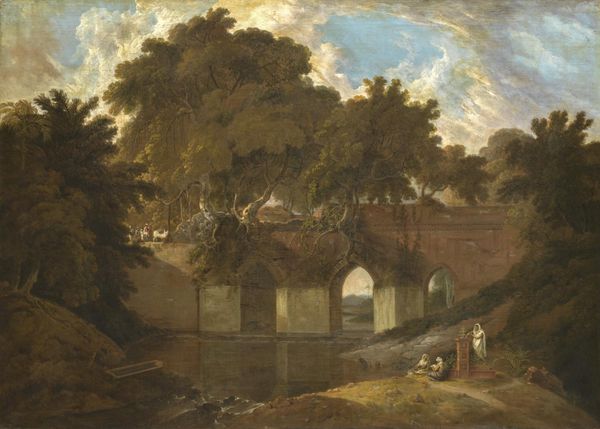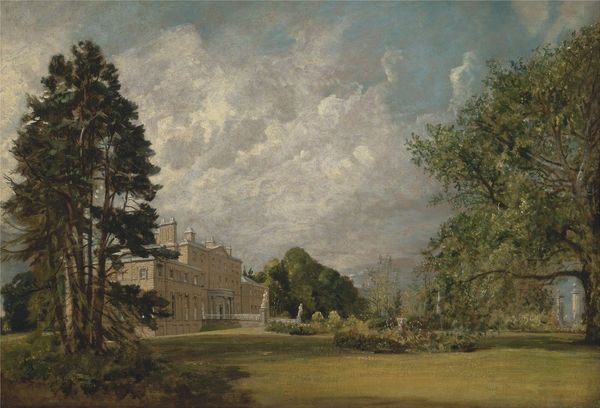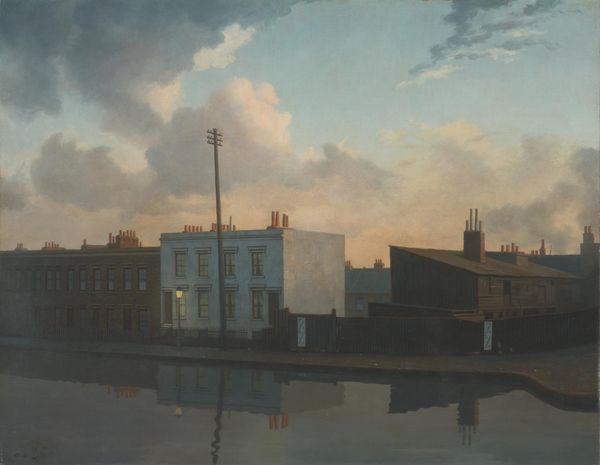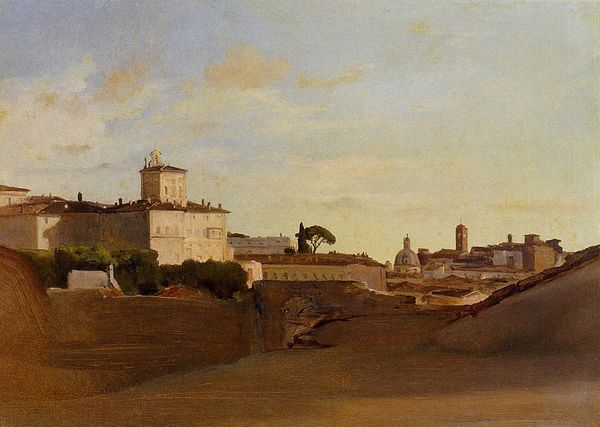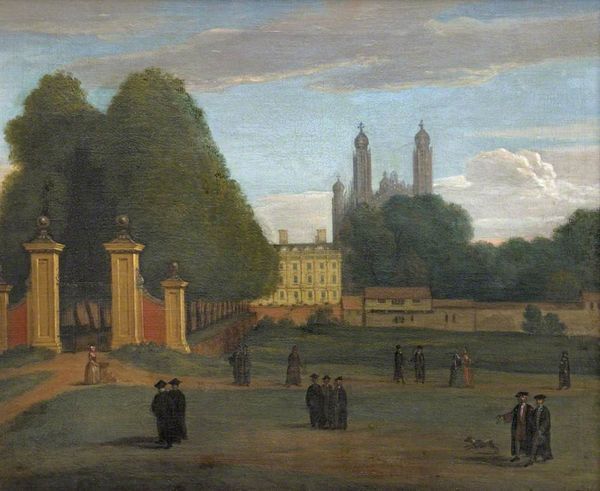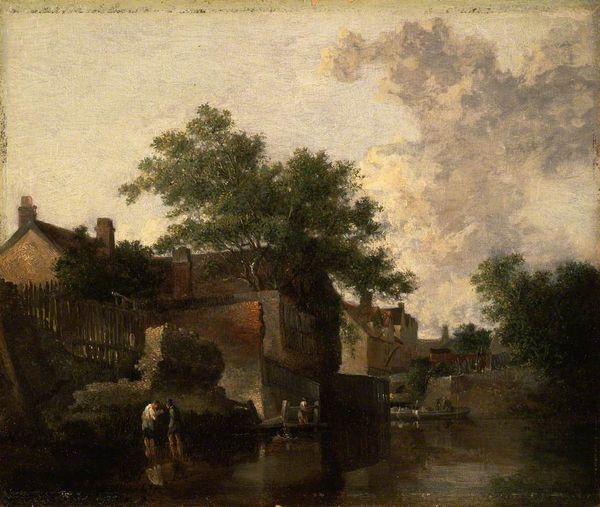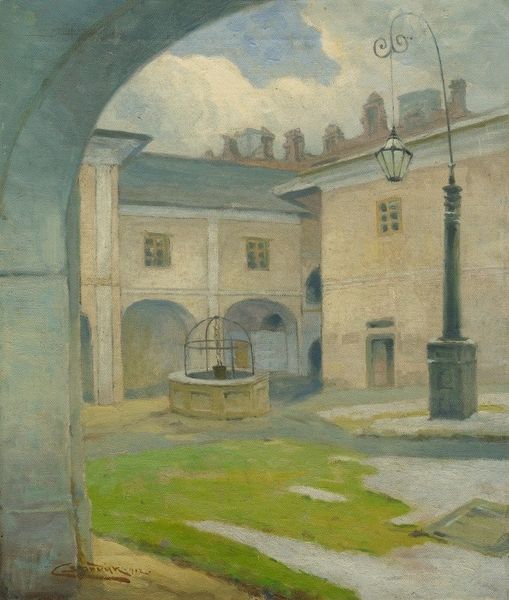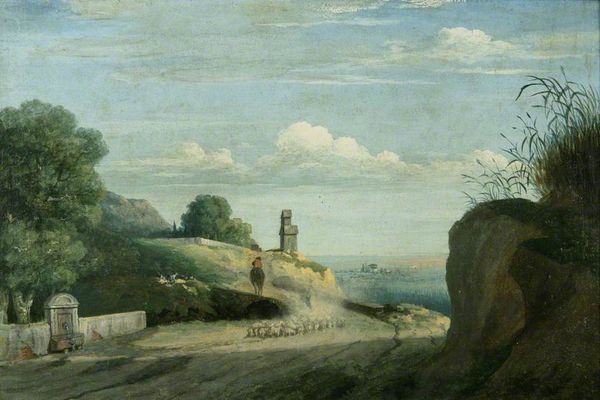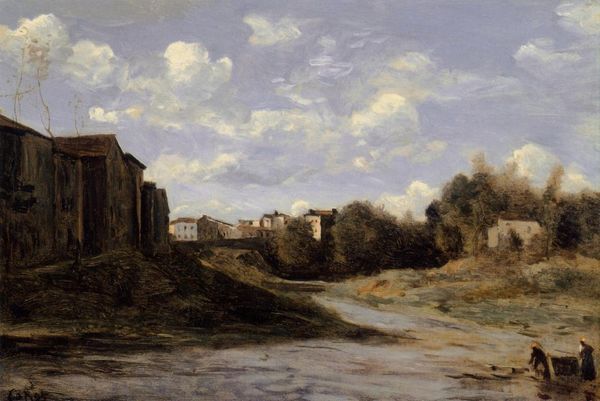
painting, oil-paint, architecture
#
neoclacissism
#
painting
#
oil-paint
#
landscape
#
oil painting
#
cityscape
#
architecture
#
building
Copyright: Public domain
Curator: Let's spend some time looking at this evocative oil painting, "Buildings in Naples with the North-East Side," created in 1782 by Thomas Jones. What are your first thoughts? Editor: There’s a stillness to it. A kind of mundane beauty in these ordinary buildings. It feels incredibly intimate, like a secret glimpse into the everyday lives of people in Naples. It's not idealized; there's laundry hanging, the plaster looks aged... Curator: Precisely! Jones wasn't interested in grand narratives but in the quiet observations of urban life. He was a Welsh artist who spent several years in Italy, and these small, uncommissioned works offered a refreshing alternative to the prevailing academic art focused on history or mythology. Editor: And what does that focus communicate? What kind of statement do you think Jones was trying to make about art at this time, or about the subjects of his art, even? It certainly centers the perspective of the commoner and their daily life. Curator: It signifies a move towards a more democratic, relatable subject matter. It's a rebellion against the art establishment. Think of it: he is not painting emperors, nor gods, just a slice of the cityscape of Naples. A political statement by showing the value in the common world. Editor: I think it also speaks to a fascination with light and texture. The way the sun hits the buildings, the roughness of the plaster... you can almost feel the warmth. It really highlights the materiality of the city, the evidence of its lived history. I am compelled to reflect on the stories embedded in those facades. What stories do you think he noticed and chose to paint here? Curator: Well, his focus on Neapolitan buildings aligns with the eighteenth-century architectural debates valuing classical purity while exploring regional differences. He captures Naples, not as a symbol of grand antiquity, but as an imperfect, lively city. He democratized landscape paintings too. Editor: Exactly. Democratization is at the heart of it. It encourages us to examine our own surroundings with a keener eye, appreciate the subtle beauty that is easy to ignore when looking for it. Curator: It's a remarkable snapshot of Naples then and reminds us of the shifting narratives that construct our understanding of the past and the present, no? Editor: Absolutely. And how a quiet, still moment captured on canvas can open a whole world of questions about who we are, where we've been, and where we're going.
Comments
No comments
Be the first to comment and join the conversation on the ultimate creative platform.

